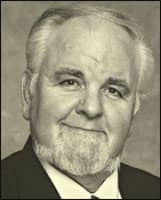Summary: Researchers found that an innovative surgical approach to remove acoustic neuromas improved hearing preservation, quality of life, and facial nerve outcomes for patients.
Takeaways
- The innovative surgical approach preserved hearing in 68% of patients and achieved excellent facial nerve outcomes in 94% of patients.
- Patients experienced significant improvements in balance, anxiety, energy, pain, and general health one year post-surgery.
- The middle fossa craniotomy approach allows skilled surgeons to remove smaller tumors without compromising surrounding brain or inner ear structures, preserving hearing and quality of life.
Researchers at the University of California San Diego School of Medicine found that using an innovative surgical approach to remove an acoustic neuroma, a slow-growing, benign brain tumor, improved hearing preservation and quality of life for patients while also presenting excellent facial nerve outcomes.
The results, published in Otology & Neurotology, showed that surgically removing an acoustic neuroma by exposing the area above the inner ear and the internal auditory canal significantly improved hearing preservation and quality of life, along with balance, anxiety, energy, pain and general health in patients at the one-year post-surgery mark.
Improved Patient Hearing
More specifically, hearing was preserved in 68% of patients, while 94% of patients showed excellent facial nerve outcomes at post-operative follow-up.
“We have found that patients with an acoustic neuroma could experience symptoms that significantly impact their overall physical and mental well-being,” says Rick Friedman, MD, PhD, professor in the Department of Surgery at UC San Diego School of Medicine and neurotologist at UC San Diego Health. “There has been a definite benefit to surgery when we were able to save a patient’s hearing, which can directly affect their quality of life, instead of taking the conservative approach and waiting to operate until after they’ve already lost their hearing.”
The middle fossa craniotomy approach is used to treat smaller tumors, up to about 1.7 centimeters in length, generally confined to the internal auditory canal. It involves a skilled specialist looking down at the floor of their cranial cavity and making an incision above the ear. They then carefully expose and dissect the tumor, without compromising the surrounding structures of the brain or inner ear to preserve hearing.
What is an Acoustic Neuroma
An acoustic neuroma, also referred to as a vestibular schwannoma, is a tumor that can grow on the nerve that connects the ear to the brain. Schwann cells wrap around nerve fibers to help support and insulate them, including hearing and balance nerves inside the ear. Overproduction of these cells, however, can cause tinnitus (ringing in the ear), hearing loss, dizziness, and loss of balance. If left untreated, the tumor can grow and place pressure on the nerve and nearby brain structures and become life threatening.
Very few acoustic neuroma centers in the nation offer middle fossa surgery.
The study, which involved 71 participants, is the first time quality of life has been measured after acoustic neuroma removal using this innovative surgical approach.
“Many patients attribute one-sided hearing loss to aging and don’t realize that a simple MRI scan can present answers to their discomfort,” says Friedman. “We want them to live as full of a life as possible after the tumor is removed and preserve their hearing. This study is important for us to understand patient motivation for surgery, patient counseling and management of their expectations.”
The study, adds Friedman, has a greater emphasis placed on patient-centered care and shared decision-making between physicians and patients.
“With the results from this study, we can further advance treatment options for patients with an acoustic neuroma and continue to deliver exceptional, leading-edge care to more individuals around the world,” Friedman says.
Co-authors of the study include: Pawina Jiramongkolchai, Alexandra Vacaru, Olivia La Monte and Joshua Lee, all at UC San Diego.
The funding for this research came, in part, from UC San Diego Health.
Featured image: Pictured above from left to right are Rick Friedman, MD, PhD, and Marc Schwartz, MD, internationally recognized co-directors of the acoustic neuroma program at UC San Diego Health. They work with a multidisciplinary team of specialists and researchers to advance treatment options for acoustic neuroma and deliver exceptional care. Photo: Kyle Dykes | UC San Diego Health





